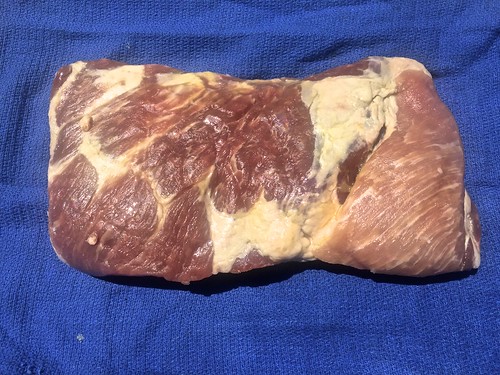Seasoned with sea salt and black pepper and, sometimes, with luxurious melted butter, I couldn't be happier. On a trip to Mexico, I enjoyed grilled corn on the cob, elote. That Mexican classic made me think about making a salad that trimmed down on the fat, retained the same spices and built out the flavors.
Mexican street food
Travel in Mexico and you'll encounter street vendors selling a great number of delicious food snacks. Elote is one of the best. An ear of corn is grilled, dusted with dry cheese, slavered with mayonnaise and seasoned with chili powder and fresh lime juice. The ear of corn is always served whole, sometimes resting in a paper dish or with a stick in the bottom like a corndog.
Elote is delicious but messy to eat. A whole ear of corn takes two hands to manage. And, with each bite, the finely grated Cotija cheese floats into the air, landing on clothing.
Deconstructing elote
Cutting the kernels off the cobs makes the seasoned corn easier to enjoy. In Mexico there is a corn kernel snack called esquires, which employs some of the elote seasonings. The recipe I settled on uses olive oil instead of mayonnaise. That way the salad can be served as a light entrée topped with a protein or as a side dish accompanying grilled vegetables, meats, poultry and fish. A perfect summer recipe.
The best way to cook corn on the cob is a topic of heated debate. There are those who will only boil corn, others who will only grill it. I have seen elote prepared using both. My preference is to strip off the husk and grill the ear so that some of the kernels are charred, adding caramelized sweetness to the salad.
Just the right cheese
What gives elote its distinctive flavor is the combination of spicy chili powder, fresh lime juice and Mexican Cotija cheese.
Powdery when finely grated, Cotija cheese is salty so you may not need to add salt when you make the corn salad. Often described as having qualities similar to feta and Parmesan, Cotija tastes quite different.
Mexican Corn Salad
Adding finely chopped Italian parsley to the seasoned corn kernels brightens the flavors. Cilantro can be used instead of parsley to give the salad a peppery flavor.
The corn can be prepared ahead and kept in the refrigerator overnight. In which case, do not add the Cotija cheese or parsley until just before serving.
To create a colorful salad, just before serving, toss the seasoned corn and parsley with quartered cherry tomatoes, cut-up avocados and butter lettuce or romaine leaves.
After tossing, taste the salad and adjust the amount of Cotija cheese and chili powder and, if needed sea salt.
Prep time: 10 minutes
Cook time: 15 to 20 minutes
Total time: 25 to 30 minutes
Yield: 4 entrée servings or 8 side dish servings
Ingredients
4 tablespoons olive oil, divided
1/2 teaspoon sea salt
1/4 teaspoon freshly ground black pepper
4 large ears of corn, husks and silks removed, washed, dried
1/2 cup finely grated Cotija cheese
1/2 teaspoon chili powder
Directions
1. Preheat an indoor grill or outdoor barbecue to hot.
2. Pour 2 tablespoons olive oil into a flat pan and season with sea salt and black pepper.
3. Roll the ears of corn in the seasoned olive oil to coat all sides.
4. Using tongs, place the corn on the grill, turning every 2 to 3 minutes so that some of the kernels char, being careful not to burn the ears.
5. After the corn is cooked on all sides, remove and let cool in the flat pan with the seasoned olive oil.
6. To cut the kernels off the cob, use a sharp chef's knife. Hold each ear of corn over the pan with the seasoned oil and slice the kernels off the cob.
7. Transfer the kernels and the remaining seasoned oil into a large mixing bowl.
8. Add Cotija cheese, chili powder and parsley. Toss well.
9. Drizzle the remaining olive oil over the salad and toss.
10. Serve at room temperature with lime wedges on the side.





































